
Download the PDF of this article
Starting school is one of the most significant milestones of childhood – a time that brings not only opportunities but also challenges. Children need to navigate new and larger surroundings, peer groups and behavioural, social and physical demands and expectations that are different from those at home and in their early years settings.
For all children, a new school environment is a big change, but there are some who face greater challenges than others. Research tells us that children whose self-regulation, social and academic skills need to ‘catch up’ during their transition to school are less likely to settle well, or to reach their full potential, when compared to their ‘ready’ classmates. As these gaps, if not attended to, tend to widen over time, even beyond the school years, it’s important that people and settings are set up to support children and families, to help to close these multiple gaps early on.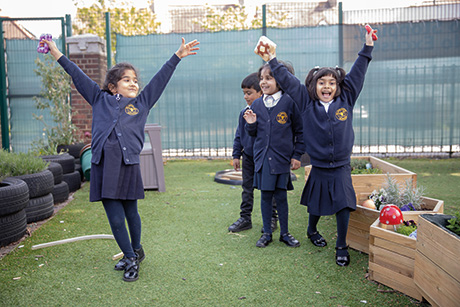
BRINGING CHILDREN INTO THE CONVERSATION
Children are at the very core of this experience and yet, curiously, their voices are largely left out of the conversation around the biggest challenges and best supports during their transition to school. They are uniquely placed to offer a view into this process through a wide lens, capturing their experiences from home, across to nursery, and through the school door. So, what stands in the way of them routinely being able to offer their perspectives on this?
Children are capable of providing accurate reports of their own experiences and perspectives – something that is recognised by the United Nations Convention on the Rights of the Child. It states that every child has the right to express their views, feelings and wishes in all matters affecting them, and to have these views considered and taken seriously, in light of their evolving capacities to communicate.
Officially then, children are regarded as knowledgeable, able to communicate and able to contribute to issues and policy decisions which affect their lives. And certainly, there has been a steep increase in the number of children spoken with and listened to in these areas. But one group that often misses out in these efforts is younger children, possibly because consulting them requires alternative approaches.
Key to successfully involving young children in the conversation is making sure we give them a range of ways to be heard. When researchers seek to better understand the lives of children as young as three to five, by listening to them directly, we need to be mindful of a number of factors. These include individual differences in their verbal communication and understanding, in their attention and ability to engage in certain tasks, and their willingness to interact with (often unfamiliar) researchers.
There are, for example, considerable benefits in offering a choice in the ways they participate. It is especially important to make sure this is the case when we are trying to reach those children who may struggle in their adjustment to school.
Using more traditional methods, such as question and answer interviews, often only leaves room for the loudest, brightest and clearest voices. But by using a diverse mix of tools and methods to try to engage young children in conversations about their experience, we increase the opportunities for even young children to make themselves heard. This can allow us to throw the net wider, stopping and listening to what young children have to say – because they are experts in their own lives and experiences.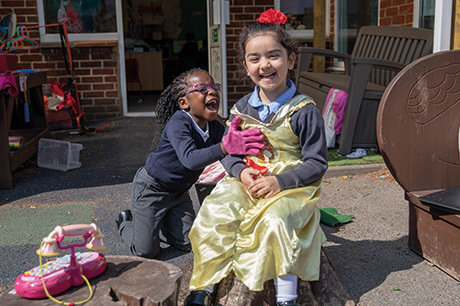
CASE STUDY: CHILDREN’S THOUGHTS ABOUT SCHOOL
The Children’s Thoughts about School Study wanted to gain a better understanding of what young children felt was important for a good start in school. Our aim was to consider what children told us was important and to compare their priorities to the things that adults currently assess when measuring a child’s ‘readiness’ for school.
To do this, 42 four- and five-year olds each spent up to an hour one-to-one with a researcher, to tell us what they thought a new school-starter would need to know. The children were halfway through their first school year and living in a deprived area of north Dublin.
How children contributed
To give all children the best chance to contribute their thoughts and feelings, they were offered four different activities. They were invited to:
- answer short questions about liking and disliking school (for example, ‘Do you ask your Mum or Dad to let you stay home from school?’)
- look at nine pictures that showed everyday school situations (for example, saying goodbye to parents, sitting on the floor listening to the teacher, and going into the playground) and talk to the researcher about them
- give their advice to a new school-starter, ‘Riley Rabbit’, letting Riley know what might be easy or difficult about school and what Riley might like or dislike
- draw a picture of themselves in school and tell the researcher about it.
After every child had had the opportunity to share their experiences, we transcribed their interviews and these were analysed. This approach lessens the likelihood of only taking note of the strongest messages from a few children and means that everyone’s contributions get considered.
Children’s points were then pooled to form a general framework of their experiences and from this we developed a set of key priorities that children felt were important in their first year of school.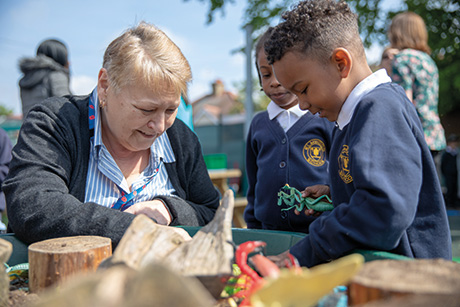
Children’s experiences and thoughts about starting school
Many of the children’s experiences overlapped with what we already focus on to support transitions. They did describe the challenges and success of developing core academic skills, and the need for good self-regulation so that they could manage being separated from their parents, and sitting still, listening and following instructions.
Yet we also found that children communicated their experiences with a richness and complexity that went beyond the scope of what our current measures of ‘school readiness’ capture. These ideas matter because they add new and important priorities to the ones adults already think about when considering what it means to be ‘school ready’.
For instance, with toileting, families and nurseries often work hard to ensure a child can maintain dryness throughout the day ahead of starting school. But in the school environment, children described feeling unsure or unsafe in finding and using the toilets alone, in knowing which toilet to use, needing to hold on, and fearing accidents – experiencing a sense of ‘bursting’ to go, without the confidence to ask the teacher. Children’s insights went beyond ‘dry or not dry’ to allow us to see the complex challenges they can face when expected to put their skills into practice in unfamiliar environments.
Children also talked about the need to be able to make friends and cope with the risks of loneliness and peer conflict. Some were evidently anxious or uncertain in their descriptions when seeking to understand whether they could join in with new peers, how to cope with aggression they observed or experienced, and how to navigate the new, and much less structured, playground environment.
Children also discussed the need for regular opportunities to think and play creatively indoors and in the playground, for access to supportive, encouraging teachers, and for strong family-school involvement within supportive community networks (see box).
It was notable that much of what the children considered to be important was borderless. In other words, they didn’t separate their own skills from the environmental factors around them, nor did they separate out supports from home and school.
The children who took part in our study very much support the view of early years researchers Sue Dockett and Bob Perry, who highlight that ‘readiness is more than a checklist of skills and contextually isolated knowledge and more than a set of behaviours that enable a child to be regarded as compliant in the classroom’ (Dockett and Perry 2002).
Instead, children challenge us to think collaboratively and across communities and settings to deliver the best start in school.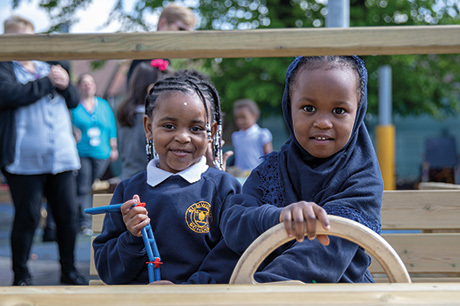
FIND OUT MORE
O’Farrelly C et al(2019) ‘Reconstructing readiness: Young children’s priorities for their early school adjustment’, Early Childhood Research Quarterly
Tatlow-Golden M et al(2017) ‘“Bursting” to go and other experiences: Children’s views on using the toilet in the first school year’, The Journal of School Nursing
Booth A et al (2019) ‘“Be good, know the rules”: Children’s perspectives on starting school and self-regulation’, Childhood
Our summary video: www.youtube.com/watch?v=Cjrt2WWMaK8 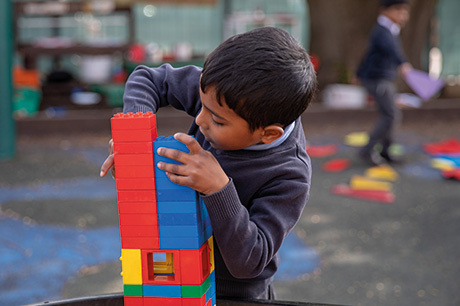
‘READY’ FOR SCHOOL
What do we mean by ‘ready’?
Some views of ‘ready’ for school focus only on classroom-based academic skills and abilities, and try to identify what is thought to be ‘inside’ each child – this is the idea that ‘readiness’ is an individual characteristic. But another view is that we need to consider the environments and relationships that surround children’s lives.
This wider view looks at how everyone and everywhere involved plays a part in being ‘ready’ for school – the home, community environments, early years settings, school, and all the links between these people and places.
This approach shifts the focus away from simply what the child brings when they come through the school gates. It allows us to consider the impact of warm and nurturing family members, what educational and play resources children have access to, the communities children are growing up in, as well as the services available within them, and the quality of the early years settings that children belong to ahead of starting school.
To arrive at a shared understanding of how best to promote children’s happiness and success at school, it is important to consider the voices of all of those involved along the way. When hoping to prepare their children for a good start in school, parents will often focus on practising skills such as reading, writing and counting. Teachers take a broader view according to key research; they see being physically healthy, having strong self-regulation, communication and social skills, and curiosity and enthusiasm for learning, as core building blocks in laying the foundations ahead of school.
Formal assessments often shine a spotlight on a specific skillset, and in doing so can shape how families, pre-schools and schools funnel their efforts to support children’s early development. With this in mind, it is important to consider if and how the incoming Reception Baseline Assessment may further shift this focus. Moving to incorporate children’s views into this mix enriches (and further complicates!) the aim of identifying key priorities to target in policy, research and, of course, practice.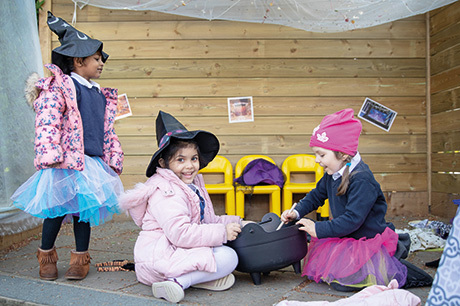
What helps children, families, nurseries, schools and communities to be ‘ready’?
Much of what pre-schools, schools and families already do can ease the demands on children settling into school, helping them to feel more positive about school and learning, facilitating their academic and social success throughout school. Early years settings fill a unique role, acting as a bridge of support for children and their families as they prepare for this transition.
Research tells us that offering children and families more personalised and ‘intensive’ transition activities can be helpful in supporting children. Typical activities include teachers’ or other practitioners’ visits to families at home and to children in their early years settings, and meetings between teachers and pre-school settings about individual children’s learning and development.
Child and family characteristics also play a part. These may include parental involvement, parents’ own experiences of education, economic disadvantage families may be facing, and children who might need extra support during this time, such as those who have English as an additional language, looked-after children and/or children with special educational needs.
There is a balance to strike between what is ideal and what is feasible, though. This is particularly important when considering the realities schools currently face, operating under a range of systems, with multiple factors affecting the level of support that might be offered. School factors can include differences in class size; resources allocated to transition practices; and the number of pre-school settings teachers may be trying to work with. While recognising the challenges, narrowing the gap between what research tells us helps, and what is possible in practice, is key (see box).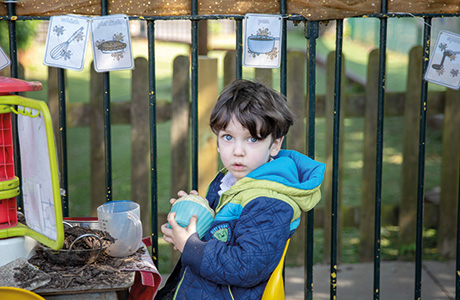
A GOOD START: WHAT CHILDREN WANT
In the Children’s Thoughts about School Study, four- and five-year-olds were able to express their desire:
To feel able and enthusiastic
- To like and look forward to school, and be enthusiastic and curious about learning.
- To have a strong belief in their own competence, even in the face of challenges.
- To be able to read, write, count and draw.
- To have the confidence and skill to maintain dryness, ask to use the toilet and complete toileting routines.
- To maintain balance, run and avoid falls, especially in the playground.
To self-regulate
- To be able to maintain attention (for example, ignore distractions and stay on task) and listen to the teacher while following rules and directions.
- To be able to control impulsive behaviour and emotions, especially anger and frustration.
- To be able to cope with separation from family and feel secure.
To have supportive and playful environments
- Regular access to play in the classroom and outdoors, with easy access to supportive adults.
- Organised classrooms with predictable routines and clear rules.
- Warm and encouraging teachers who provide support with learning and peer interactions.
- Access to friends and a positive social climate.
To navigate peer interactions
- To have the skills to seek out, develop and maintain friendships.
- The social skills to avoid rejection (control aggression, approach peers and join play).
- To have adaptive coping skills in the face of peer conflict, including the ability to seek out external support when necessary.
To have strong family and community involvement
- Positive connections between schools and families including opportunities for families to be involved in children’s school lives.
- Strong community networks to provide access to wider family and social networks and support (for example, for after-school care).
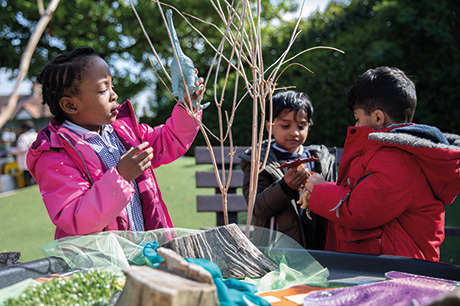
SUPPORTING TRANSITION: ACTIVITY IDEAS
These activity suggestions draw largely on the priorities reported as important by the children in our Children’s Thoughts about School Study.
Feeling able and enthusiastic
Families and nurseries (particularly key workers) can discuss with children what they are most looking forward to about starting school, as well as any worries or concerns they might have.
Visits between parents, nurseries and schools can provide valuable opportunities to share information, particularly for children who might benefit from more support.
Schools can invite parents and pre-school settings to provide portfolios or reporting templates that give an insight into individual children’s learning and development.
Parents, early years practitioners and teachers can be mindful of the differences children are likely to encounter in toileting routines in school and what they can do to help children to manage these changes.
Having good self-regulation skills
It can help to give opportunities to practise key self-regulation skills such as taking turns (for example, between telling and listening to stories), planning and working through plans (for example, play plans), and transitioning between activities.
Children may also benefit from opportunities to talk about their feelings in challenging situations.
Having supportive environments with opportunities to play
It helps to take the time for children, families and staff to get to know each other (for example, through home, nursery and school visits).
Visits to the classroom and playground ahead of starting school can allow children to become more familiar with their new environments.
Taking photos during visits, that children can explore later, can help to increase familiarity.
Exploring opportunities to embrace play in the classroom can help to motivate children and provide a familiar context for learning.
Navigating peer interactions
Parents can arrange ‘play dates’ and give children the opportunities to negotiate play ideas, practise sharing and turn-taking, resolve conflict, etc. with support from adults.
Teachers can help to scaffold peer interactions, including support on how to join ongoing play, introduce themselves and negotiate peer conflict.
Having strong family and community involvement
Schools and early years settings can encourage ongoing family engagement (for example, visits and meetings) and regular communication.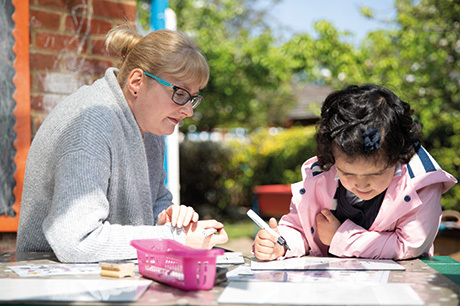
REFERENCES AND FURTHER INFORMATION
Dockett S and Perry B (2002) ‘Who’s ready for what? Young children starting school’, Contemporary Issues in Early Childhood, 3, pp67-89
National Council for Curriculum and Assessment (2019) Mo Scéal Reporting Templates, www.ncca.ie/en/early-childhood/mo-scéal
Dockett S and Perry B (2014) Continuity of learning: a resource to support effective transition to school and school age care. Canberra, ACT: Australian Government Department of Education
Transition to School Position Statement, https://arts-ed.csu.edu.au/education/transitions/publications/Position-Statement.pdf
International Journal of Transitions in Childhood, https://bit.ly/2JaR8FY
Encyclopaedia on Early Child Development, www.child-encyclopedia.com/school-readiness









